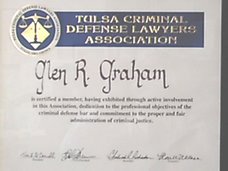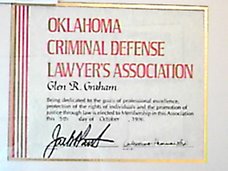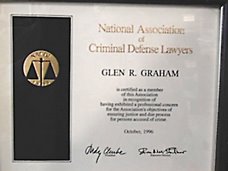"New Federalism"
http://www.wisspd.org/html/980case/casesum/constitution.htm#CONSTRUCTION
It is wise to keep in mind that the exclusionary rule has two distinct rationales: deterrence of governmental misconduct and, separately, judicial integrity. The Supreme Court over the years has essentially limited the rule to the deterrence function, whose ruthless application has led to the rule's slow erosion. But "New Federalism" in general put judicial integrity back into the suppression calculus. New Federalism offers the opportunity to consider the actual rationale originally at play, judicial integrity.
It is plain that United States Supreme Court interpretations of the United States Constitution do not bind the individual state's power to mold higher standards under their respective state constitutions. See Cooper v. California, 386 U.S. 58, 62 (1967). Indeed, the United States Supreme Court, through both majority and dissenting opinions, has explicitly extended invitations to the states to adopt different rules should they deem it appropriate. See Iowa v. Tovar, 541 U.S. 77, 94 (2004) ("We note, finally, that States are free to adopt by statute, rule, or decision any guides to the acceptance of an uncounseled plea they deem useful."); Nichols v. United States, 511 U.S. 738, 748 n.12 (1994) ("Of course States may decide, based on their own constitutions or public policy, that counsel should be available for all indigent defendants charged with misdemeanors."); Oregon v. Mathiason, 429 U.S. 492, 499 (1977) ("It is therefore important to note that the state courts remain free, in interpreting state constitutions, to guard against the evil clearly identified by this case.") (Marshall, J., dissenting); Baxter v. Palmigiano, 425 U.S. 308, 339 n.10 (1976) ("[U]se of incriminating statements can be prohibited by a state court as a matter of public policy in that State.") (Brennan, J., dissenting); Michigan v. Mosley, 423 U.S. 96, 120-121 (1975) (Brennan, J., dissenting); Oregon v. Hass, 420 U.S. 714, 719 (1975) ("[A] State is free as a matter of its own law to impose greater restrictions on police activity than those this Court holds to be necessary upon federal constitutional standards.") (emphasis in original); Lego v. Twomey, 404 U.S. 477, 489 (1972) ("Of course, the States are free, pursuant to their own law, to adopt a higher standard. They may indeed differ as to the appropriate resolution of the values they find at stake."); Cooper, 386 U.S. at 62 ("Our holding, of course, does not affect the State's power to impose higher standards on searches and seizures than required by the Federal Constitution if it chooses to do so.").(See also Robert Bloom, "Judicial Integrity: A Call for its Re-Eemergence in the Adjudication of Criminal Cases" ("The author argues that in the United States, the pendulum has swung too far toward neglecting concerns inherent in the principles of judicial integrity and that judicial integrity needs to be restored.").
For tripartite categorization of state-constitution analysis, see People v. Caballes, IL SCt No. 91547, 5/18/06: "lockstep" (mechanically follow US SCt rulings); "interstitial" (federal decisions are starting point, but state result may diverge, if sufficient reason); "primacy" -(independent state constitutional analysis, federal decisions used only for guidance).
With explicit recognition of the New Federalism movement, then, Wisconsin litigation of 4th amendment suppression issues should no longer be limited to the deterrence function, and caselaw such as Oregon's may be marshaled in support of argument that might otherwise have been overlooked even by the diligent practitioner. If you plan to raise a state constitutional argument, it would be wise to do more than evince disagreement with the federal approach. See, e.g., State v. Kottman, 2005 SD 116, ¶13 (waiver of state constitutional argument: "Counsel advocating a separate constitutional interpretation "must demonstrate that the text, history, or purpose of a South Dakota constitutional provision supports a different interpretation from the corresponding federal provision." ... No such analysis was presented here.").
Interesting critique of this initial spate of New Federalism cases by 7th Circuit Judge (and former Wis. Supreme Court Justice) Sykes, here. Though her critique is largely philosophical, and thus of little immediate practical use to the practitioner her larger point -- that these opinions are grounded more in recent social science studies than historical research -- ought to be absorbed. If these cases do represent a trend, then the court is indeed sensitive to such input, and the practitioner will have to stay current with relevant studies. On the other hand, it wouldn't hurt to attain familiarity with the drafting history of our state constitutional provisions.
Recently, the Wisconsin Supreme Court construed article I, § 8 of the Wisconsin Constitution as providing greater protection against self-incrimination than the Fifth Amendment to the U.S. Constitution, State v. Knapp, 2005 WI 127, ¶¶1-2, __ Wis. 2d __, 700 N.W.2d 899. (No. 2000AP2590-CR), and as providing greater due process protection than the Fourteenth Amendment, State v. Dubose, 2005 WI 126, ¶¶39-41, __Wis. 2d __, 699 N.W.2d 582. (No. 2003AP1690-CR). However, to date, it has not generally construed the search and seizure protections of art. I, sec. 11 of the Wisconsin Constitution to be coextensive with those of differently than the Fourth Amendment to the U.S. Constitution. We therefore interpret the state provision as providing the same level of protection from governmental searches and seizures as the federal provision. See State v. Eason, 2001 WI 98, ¶47, 245 Wis. 2d 206, 629 N.W.2d 625 See State v. Fry, 131 Wis. 2d 158, 388 N.W.2d 565 (1986) ("[W]e are reluctant to construe our state constitutional provision differently than the fourth amendment, especially since the two provisions are intended to protect the same interests and we are unconvinced that the Supreme Court provides less protection than intended by the search and seizure provision of the Wisconsin Constitution."). (Citation omitted.)
In State v. Eason, 2001 WI 98, ¶63, 245 Wis. 2d 206, 629 N.W.2d 625, this court departed from the Supreme Court's holding in United States v. Leon, 468 U.S. 897, 919-20 (1984), where the Supreme Court formulated an exception to the exclusionary rule where a police officer relied in good faith upon a search warrant issued by an independent and neutral magistrate. This court concluded that for the good faith exception to apply, "the State must show that the process used attendant to obtaining the search warrant included a significant investigation and a review by a police officer trained in, or very knowledgeable of, the legal vagaries of probable cause and reasonable suspicion, or a knowledgeable government attorney." Eason, 245 Wis. 2d 206, ¶63. Although the Supreme Court did not require this in Leon, this court held "that Article I, Section 11 of the Wisconsin Constitution requires this process and thus affords additional protection than that which is afforded by the Fourth Amendment." Id.
On the other hand, the result in Roberson may suggest that search and seizure issues will be treated differently because the underlying values they protect are simply different than those at stake in self-incrimination and due process issues. Put baldly, the latter implicate reliability of the fact-finding process, while the former actually distorts it. An old dispute to be sure, whether protection against overweening governmental intrusion trumps other values, but the "new federalism" cases surely renew it. Indeed, the very problem is precisely the one obscured by the court of appeals: New Federalism creates (or, rather, restores) a different paradigm for 4th amendment analysis, one in which "judicial integrity" is at least as important as cost-benefit (or deterrence of police misconduct). It may be that notions of integrity are insufficiently triggered on these particular facts, but it something else altogether to say, as the court of appeals plainly does, that such notions are simply irrelevant. It is very hard not to see this as an opening salvo in an ideological war. Will the supreme court issue a riposte, or will it be content to see the New Federalism line of march halted before it’s even left the trench?
New Federalism - Protecting Individual Rights through State Constitutions
Posted by
Unknown
0
comments
![]()
Judicial Integrity: A Call for its Re-Emergence
Judicial Integrity: A Call for its Re-Emergence in the Adjudication of Criminal Cases
ROBERT M. BLOOM Boston College - Law School
Boston College Law School Research Paper No. 1993-02 Journal of Criminal Law and Criminology, Vol. 84, pp. 462-501, 1993
http://papers.ssrn.com/sol3/papers.cfm?abstract_id=771587
Justice Rehnquist once said that there may be cases "in which the conduct of law enforcement agents is so outrageous that due process principles would absolutely bar the government from invoking judicial process to obtain a conviction." See, U.S. v. Russell, 411 U.S. 423, 431-32 (1973).
Our founding fathers were sensitive to the possible abuses of power by government and created three branches of government to assure checks and balances. The idea is that 'checks and balances' involves the importance of each branch curbing the excesses of the other branch. It is the idea that power can be successfully limited if it is shared and checked and balanced. The concept of checks and balances is associated with the independence and integrity of the judiciary.
Our founding fathers were sensitive to the perceived evils arising from the English system---a system in which the monarchy could utilize the courts for its own purposes.
According to Justice Brandeis's dissenting opinion, in Olmstead v. U.S., he said:
Decency, security and liberty alike demand that government officials shall be subjected to the same rules of conduct that are commands to the citizen. In a government of laws, existence of the government will be imperilled if it fails to observe the law scrupulously. Our government is the potent, the omnipresent teacher. For good or for ill, it teaches the whole people by its example. Crime is contagious. If the Government becomes a lawbreaker, it breeds contempt for law; it invites every man to become a law unto himself; it invites anarchy. To declare that in the administration of the criminal law the ends justifies the means----to declare that the Government may commit crimes in order to secure the conviction of a private criminal----would bring terrible retribution. Against that pernicious doctrine this Court should resolutely set its face. Omstead v. U.S., 277 U.S. 438 (1928) at 485.
Decisions based upon sound principles may often be unpopular, especially where the accused appears guilty of a crime. The judicial branch in America was envisioned by the founding fathers as an independent branch not subject to outside influences or the popular demands of the masses. The fickle whims of the public are not a proper influence, as the courts need to rise above the fray and maintain themselves as a symbol of lawfulness. As stated by Justice Frankfurter, "public confidence in the fair and honorable administration of justice, upon which ultimately depends the rule of law, is the transcending value at stake." See, Sherman v. U.S., 356 U.S. 369, 380 (1957). It is in the long-term interest of society based upon the rule of law that its courts should be a symbol of lawfulness.
The full qoute by Justice Frankfurter, in the Sherman decision is as follows:
Insofar as they are used as instrumentalities in the administration of criminal justice, the federal courts have an obligation to set their face against enforcement of the law by lawless means or means that violate rationally vindicated standards of justice, and to refuse to sustain such methods by effectuating them. They do this in the exercise of a recognized jurisdiction to formulate and apply "proper standards for the enforcement of the federal criminal law in the federal courts," an obligation that goes beyond the conviction of the particular defendant before the court. Public confidence in the fair and honorable administration of justice, upon which ultimately depends the rule of law, is the transcending value at stake. See, Sherman v. U.S., 356 U.S. 369, 380 (1957) (Frankfurter, J., concurring).
In our political culture, society sees the court as a symbol of justice.
There has been a tendency to give the executive (police) more discretion, such as the loosening of the probable cause standard from the specific two pronged approach to the imprecise "totality of the circumstances" standard, while at the same time there have been more and more limits placed upon judicial discretion, such as sentencing guidelines and mandatory minimums, and enhancements. Thus, discretion is being created in the name of law enforcement, but there is a great reluctance to create it in the name of individual rights. Possibly, the re-emergence of principles of judicial integrity will act as a check on the increasing discretionary power of the police.
Government improprieties should not find an oasis within the court system.
See: http://papers.ssrn.com/sol3/papers.cfm?abstract_id=771587
Posted by
Unknown
0
comments
![]()
ABA Commission Recommends Improvements in Criminal Justice System
ABA Commission Makes Recommendations for Improvements in Criminal Justice System
Date of Report from American Bar Association Commmission on Effective Criminal Sanctions: June 2006Delivered to the ABA House of Delegates - August 2006 (awaiting final approval of the ABA at Large)
Direct link to the ABA report in pdf format: http://tinyurl.com/o4ozl
Commission on Effective Criminal Sanctions (78 pages)Qoutes Justice Kennedy on intial pages: "When the door is locked against the prisoner, we do not think about what is behind it."Most states now spend more on their prisons than on their schools. Justice Kennedy says "Our resources are misspent, our punishments too severe, our sentences too long."
Posted by
Unknown
0
comments
![]()





